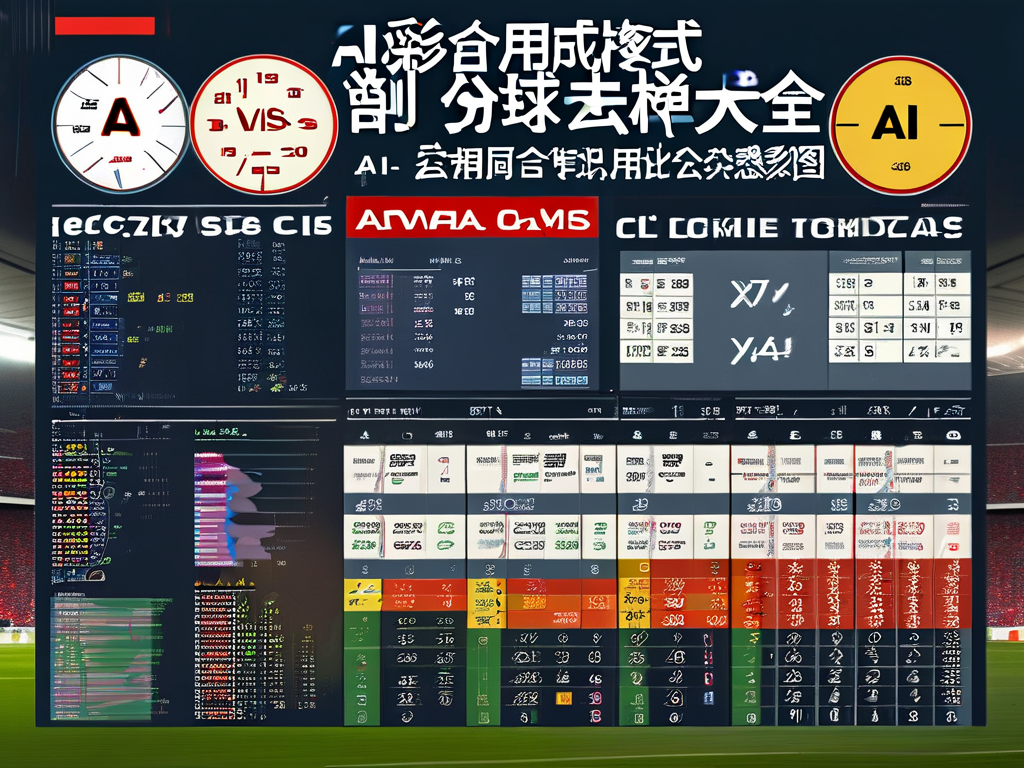Football betting enthusiasts constantly seek reliable strategies to improve their odds of success. Among the most valuable tools are mathematical formulas, algorithmic models, and visual aids like charts and tables. This article explores practical approaches to leveraging these resources effectively while avoiding common pitfalls.

Core Mathematical Formulas in Football Betting
At the heart of analytical betting lies probability theory. The Kelly Criterion remains a cornerstone formula for stake management, calculated as:
f = (bp - q) / b Where f represents the fraction of bankroll to wager, b the decimal odds, p the estimated probability of winning, and q the probability of losing (1 - p). This formula helps prevent overexposure while maximizing long-term growth.
Another essential calculation is the Poisson Distribution, used to predict goal-scoring probabilities. By inputting team-specific attack and defense metrics, bettors can simulate match outcomes. For instance:
P(x) = (λ^x * e^-λ) / x! Here, λ denotes the expected goals, and x represents potential goal counts. This model works particularly well for over/under markets and correct score predictions.
Algorithmic Approaches to Match Analysis
Modern betting algorithms combine multiple data streams. A basic predictive model might integrate:
- Team form (last 5-10 matches)
- Head-to-head historical data
- Injury reports and lineup changes
- Weather conditions and venue statistics
Machine learning techniques like Random Forest classifiers have gained traction for processing these variables. These algorithms identify patterns in historical data to forecast match results, though they require regular retraining to maintain accuracy.
Visual Tools for Quick Decision-Making
Pre-made betting tables and charts offer time-strapped bettors actionable insights. A well-designed odds comparison matrix helps identify value across bookmakers, while heatmaps of team performance reveal tactical tendencies. For example, a chart showing a team’s scoring frequency by match minute can inform live betting strategies.
Statistical tables tracking Expected Goals (xG) prove particularly useful. These quantify shot quality rather than mere quantity, offering a more nuanced view of team performance. A typical xG table might display:
| Team | xG For | xG Against | xG Difference |
|---|---|---|---|
| A | 2.1 | 1.4 | +0.7 |
| B | 1.8 | 2.3 | -0.5 |
Practical Implementation Tips
- Combine quantitative and qualitative analysis: Algorithms excel at processing numbers but miss contextual factors like team motivation or managerial changes.
- Validate models with historical data: Backtest strategies using past seasons’ results before risking capital.
- Use charts for pattern recognition: Visualize teams’ home/away performance splits or scoring trends across tournaments.
Common Mistakes to Avoid
Over-reliance on any single formula tops the list of errors. The Poisson Distribution assumes independent scoring events, which doesn’t account for real-game dynamics like red cards or weather changes. Similarly, the Kelly Criterion can suggest dangerously high stakes if probability estimates are inflated.
Another frequent oversight involves misinterpreting algorithm outputs. A 65% predicted win probability doesn’t guarantee success but indicates value if bookmakers offer odds implying a 50% chance.
Effective football betting requires blending mathematical rigor with practical wisdom. By mastering key formulas, implementing robust algorithms, and utilizing visual data tools, bettors can make more informed decisions. Successful practitioners continually refine their approaches, cross-verifying algorithmic suggestions with real-world observations. As the betting landscape evolves, so must the tools and methodologies employed by serious analysts.


